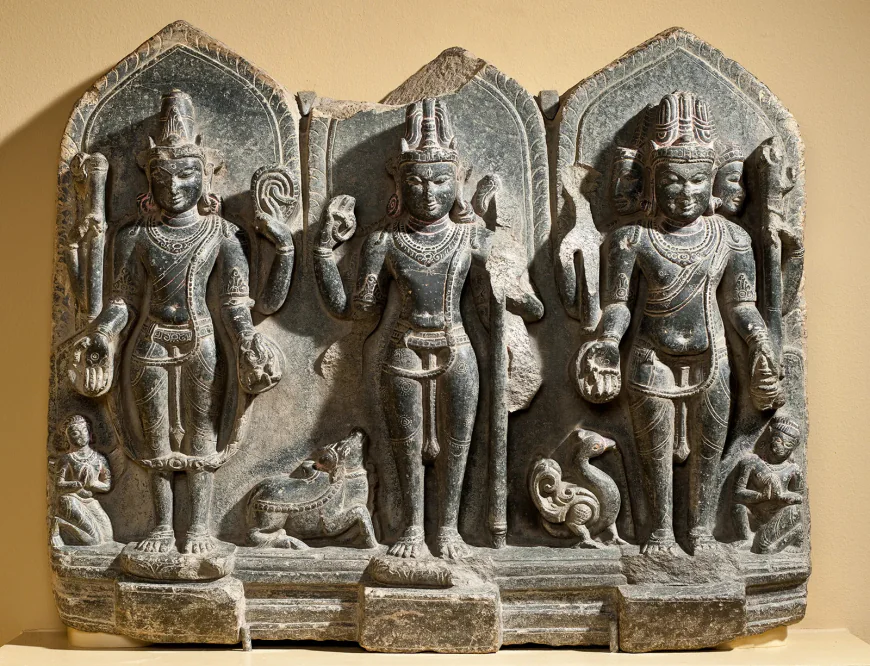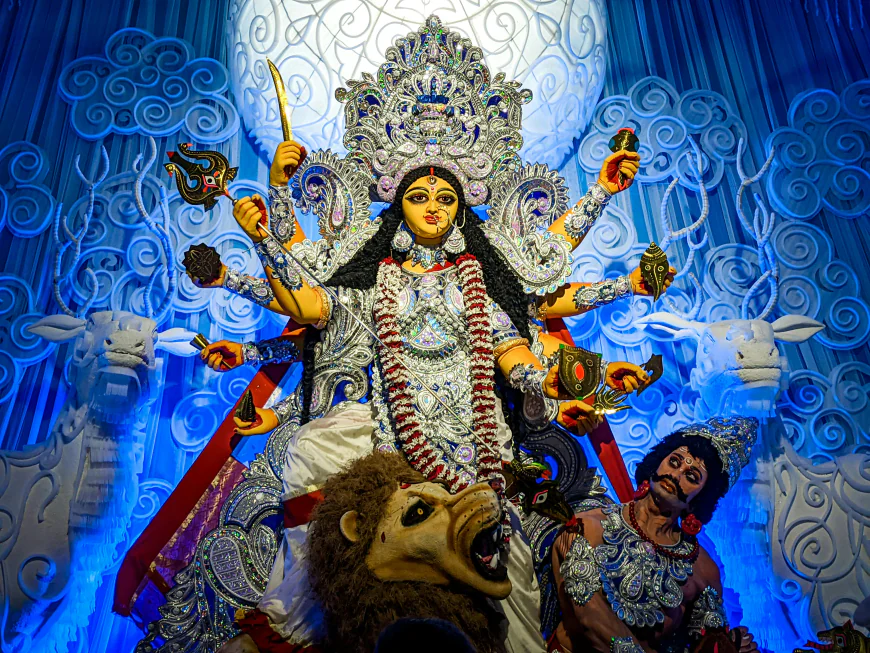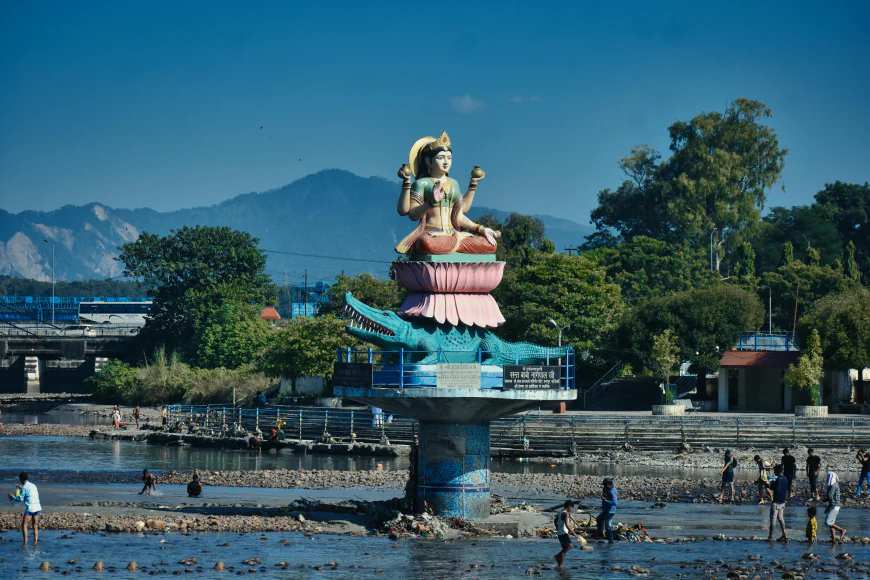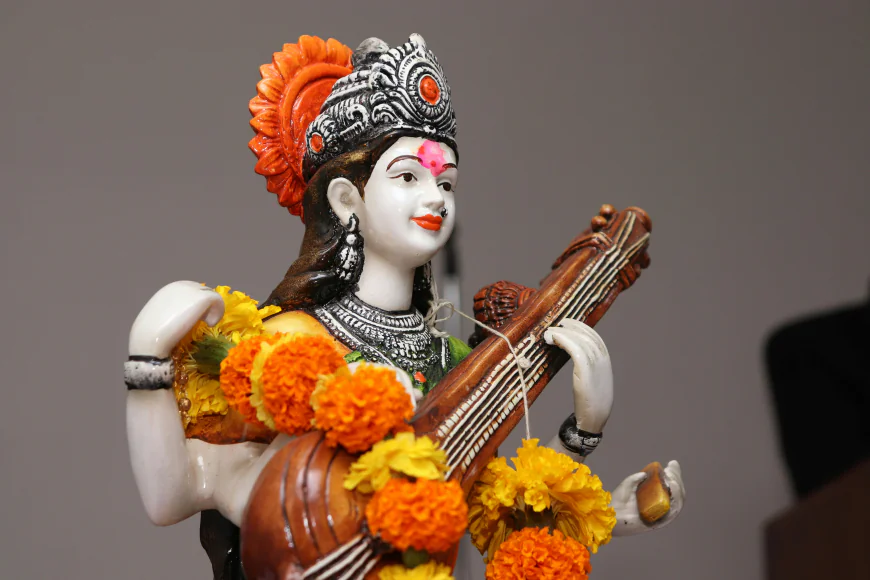The Primordial Energy and the Divine Feminine in Yoga and Beyond
Exploring Cosmic Creation- Durga, Lakshmi and Saraswati, emerging Yogic Practices, and Modern Relevance of the Goddess With Yoga Shakti as the Divine Feminine.

Introduction: Yoga Shakti as the Essence of Strength in You
At the heart of yoga philosophy lies Yoga Shakti—the primordial cosmic energy that breathes life into the universe, sustains it, and dissolves it into nothingness. For Yogakshti, a platform dedicated to unlocking "Strength in You," Yoga Shakti is more than a metaphysical concept; it is the embodiment of the inner power that fuels physical vitality, mental clarity, and spiritual awakening. This article delves into Yoga Shakti’s multifaceted role—from ancient scriptures to modern yoga mats—and reveals how this divine feminine force can transform your practice and worldview.
1. Yoga Shakti in Hindu Philosophy: The Cosmic Architect
1.1 Yoga Shakti as Cosmic Creation and Sustenance
Yoga Shakti is the dynamic force behind the Hindu trinity’s functions: Brahma (creation), Vishnu (preservation), and Shiva (destruction). In the Devi Bhagavata Purana, the goddess declares, “I alone exist; this universe is my manifestation.”
-
Srishti (Creation): Yoga Shakti is the spark that ignited the Big Bang of Hindu cosmology. She is Adi Para Shakti, the primordial energy that birthed the universe from chaos.
-
Sthiti (Preservation): As Lakshmi, she nurtures life through abundance and harmony. Farmers in India still chant Lakshmi mantras during harvests, linking her to Earth’s fertility.
-
Samhara (Dissolution): Kali, the fierce form of Yoga Shakti, embodies destruction to pave the way for renewal. Her iconic imagery—tongue outstretched, standing atop Shiva—symbolizes the triumph of raw energy over stagnation.

Yogic Connection: In Hatha Yoga, the balance of solar (Ha) and lunar (Tha) energies mirrors Yoga Shakti’s role in maintaining cosmic equilibrium.
1.2 The Trinity of Yoga Shakti: Durga, Lakshmi, Saraswati
The triad of goddesses represents the three pillars of existence:
-
Durga (Strength): Wielding weapons gifted by male gods, Durga slays the buffalo demon Mahishasura. Her victory during Navaratri celebrates the triumph of courage over fear.

-
Lakshmi (Prosperity): Beyond material wealth, Lakshmi governs inner richness—self-love, gratitude, and emotional resilience.

-
Saraswati (Wisdom): The patron of arts and learning, Saraswati’s veena (lute) symbolizes harmony between knowledge and creativity.

Festivals & Practices:
-
Diwali: Lighting lamps to invite Lakshmi into homes.
-
Vasant Panchami: Students offer pens to Saraswati for academic success.
1.3 Yoga Shakti in Tantra: Kundalini and the Serpent Power
Tantra views Yoga Shakti as Kundalini—a coiled serpent resting at the base of the spine. When awakened through yoga, meditation, or pranayama, it ascends through the chakras, culminating in union with Shiva (consciousness) at the crown.
-
Chakras as Energy Hubs: Each of the seven chakras corresponds to a Yoga Shakti aspect:
-
Muladhara (Root): Survival instincts (Dakini Shakti).
-
Anahata (Heart): Unconditional love (Kakini Shakti).
-
-
Ardhanarishvara: The androgynous fusion of Shiva and Yoga Shakti symbolizes the inseparability of energy and consciousness.
Case Study: Tibetan Buddhist practices of “Tummo” (inner fire) mirror Kundalini activation, proving Yoga Shakti’s cross-cultural resonance.
2. Yoga Shakti as the Divine Feminine: Beyond Gender
2.1 Symbolism of Fertility and Creativity
Yoga Shakti’s link to fertility transcends biology. In the Rigveda, she is Prithvi (Earth), the mother nourishing all life.
-
Agricultural Rituals: Bengali women plant barley seeds during Durga Puja, tying crop growth to divine femininity.
-
Artistic Expression: Classical dance forms like Bharatanatyam honor Yoga Shakti as the muse of rhythm and expression.
2.2 Yoga Shakti in Yogic Practices: Prana and Beyond
-
Pranayama: The rhythmic breath (inhalation = Yoga Shakti, exhalation = Shiva) balances Ida and Pingala nadis.
-
Asanas:
-
Shakti Chalana Kriya: Dynamic twists to awaken Kundalini.
-
Durga Mudra: A hand gesture to invoke courage.
-
-
Meditation: Visualizing Yoga Shakti as a golden light radiating from the heart.
Yogakshti Tip: Start your day with the mantra “Om Aim Hreem Kleem Chamundaye Viche” to channel Durga’s fearlessness.
2.3 Yoga Shakti in Comparative Mythology: Global Connections
-
Isis (Egypt): The winged goddess who resurrected Osiris, akin to Yoga Shakti’s regenerative power.
-
Sophia (Gnosticism): Divine wisdom that births the cosmos, mirroring Saraswati.
-
Pele (Hawaii): Volcano goddess embodying creation and destruction, much like Kali.
3. Philosophical Debates: Is Yoga Shakti Supreme?
3.1 Yoga Shakti vs. Brahman: Dualism in Shaktism and Advaita Vedanta
-
Shaktism: Regards Yoga Shakti as the ultimate reality (Brahman is her passive counterpart).
-
Advaita Vedanta: Views Yoga Shakti as a manifestation of formless Brahman. Philosopher Adi Shankara wrote, “The world is illusion; only Brahman is real.”
4. Modern Yoga Shakti: From Feminism to Pop Culture
4.1 Yoga Shakti and Feminism: Reclaiming the Goddess Within
-
Historical Context: Reformers like Ram Mohan Roy used Yoga Shakti imagery to oppose social injustices.
-
Modern Movements: The #MeToo era sees women invoking Kali’s fury against oppression.
4.2 Yoga Shakti in Pop Culture
-
Bollywood: Films like Devdas depict courtesans as Yoga Shakti incarnates—beautiful yet tragic.
-
Art: Arpana Caur’s paintings reimagine Kali as a protector of refugees.
Conclusion: Embracing Yoga Shakti in Your Journey
Yoga Shakti pulses in every breath, every asana, and every act of courage. At Yogakshti, we believe that understanding Yoga Shakti’s cosmic dance empowers you to harness the “Strength in You.” Whether through a mindful Sun Salutation or meditating on Kali’s transformative fury, remember: You are Yoga Shakti.
What's Your Reaction?
 Like
1
Like
1
 Dislike
0
Dislike
0
 Love
3
Love
3
 Funny
0
Funny
0
 Angry
0
Angry
0
 Sad
0
Sad
0
 Wow
1
Wow
1









